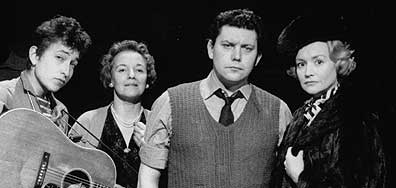The Big Freeze

Dear friends,
It snowed here on January 6, 2025 and the temperature has been hovering around 32°F ever since. It snowed again last week, although not heavily. If you have lived in Massachusetts or Illinois, no doubt Delaware’s meager snowfall is hardly worth commenting on.
Nonetheless, we are experiencing a prolonged cold spell. The chilly gusts which turn our noses, hands and ears into icicles have driven us indoors. The stark beauty of the winter landscape, with its bare trees set against the cold blue sky, has brought about a change in our general mood. I find my own thoughts moving to harmonize with the surroundings. As I gaze at the snowy surroundings, I begin to see things with greater calmness and simplicity.
In Great Britain, one of the coldest winters on record was “The Big Freeze”, between the end of December 1962 and March 6, 1963, when the whole of the country was blanketed in thick snow and ice. It was a long and bitter winter. Carrots and potatoes were frozen in the ground and had to be removed using hammers and pneumatic drills. Most houses did not have central heating, and families gathered around the coal fire in the living room, while the rest of the house remained freezing cold.
The Big Freeze is a footnote in two of the most important cultural stories of the past seventy years. In late December 1962, a young American singer-songwriter flew into England to star in a BBC play. He had been observed performing in New York by a British television producer, who invited him to star as the main character in a televised play called The Madhouse on Castle Street.
The young and ambitious singer-songwriter agreed, although soon into rehearsals it became clear that his acting skills were not up to scratch. Changes were made, and the American remained in the play as a kind of Greek chorus, singing and playing his guitar.
In one memorable scene, he sits at the top of the stairs and plays a song for the first time on television anywhere: Blowing in the Wind. The singer was, of course, Bob Dylan, then 21 years old. Filming wrapped up on January 4, and the play was transmitted nationwide on British television on January 13, 1963.
On the same day The Madhouse on Castle Street was broadcast, an up and coming band called the Beatles visited Alpha Television Studios in Birmingham, West Midlands. They were one of seven bands being recorded that day for a program called Thank Your Lucky Stars. The Beatles closed the first half of the program by miming to Please Please Me. The program was later broadcast nationally on January 19, 1963.
Within the space of a week in early 1963, both Bob Dylan and the Beatles appeared for the first time on nationwide British television. Of course, no one knew then what a phenomenal impact both would have on the world. They arrived at a time of generational change, fueled by an increasing affluence in society, new technologies and a cultural shift to non-conformity. Musically, both grew out of the American musical tradition, borrowing from folk, country and rhythm and blues. Both owed a debt to black music: the younger McCartney and Dylan both idolized Little Richard.
Some thought Dylan would be a new kind of cultural and spiritual leader, which was partly true. However, as soon as one group of people claimed Dylan as their own, he went off in an entirely different direction. He had a habit of deciding his own course. In one sense, he embodies the American spirit of creativity, individuality and independence.
The good news is that their legacies have been long lasting and mostly beneficial. The world is culturally richer for their contributions. One could argue that Dylan was the more important, because he influenced the Beatles and other artists such as Jimi Hendrix. Dylan has also written some of the best gospel music of the past forty years. I once preached a sermon inspired by Dylan’s “Gotta Serve Somebody.”
Now the bad news. Neither of the television programs broadcast in 1963 has survived. In the Beatles’ case, the tape was wiped and re-used. As for The Madhouse on Castle Street, a 16mm print survived until 1968, by which time Dylan was famous world-wide. Sadly, in an act of unforgivable cultural vandalism, the BBC then junked the only copy they had.
Maybe you were there in early 1963, shivering in the long, cold winter when Bob Dylan and the Beatles appeared on the telly within days of each other? Who could have guessed in those gray days that light was pouring in through the cracks of winter? Would that in 2025 a cultural rebirth of a similar magnitude could take place. As Pete Shelley wrote fifteen years later, I have “nostalgia for an age yet to come.”
Father David


0 Comments
There are no comments.
Stay Tuned
Sign-up for David's newsletter